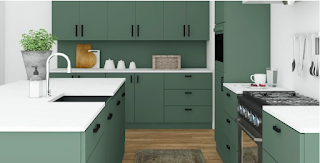How Technology is Changing the Business of Interior Design?
Technology acts as a huge boon to interior designers. Today, designers have access to amazing innovations which help them design spaces without even being there. CAD programs help designers and aspiring designers to create a portfolio and develop products and designs. This makes interior designing a lot more collaborative among the designer, clients, and even vendors and suppliers.
Introduction to Technology for Interior Design
In today’s evolving world, it’s important to be abreast with the latest technology. As people progress towards building smart homes, becoming more sustainable, and adopting the latest trends and designs, designers need to become more aware of how they can use resources and tools in their favor to create more efficient living spaces.
For example, there are many digital design processes that designers use, such as the Building Information Modeling (BIM) process which involves generating and managing the physical and functional aspects of a space, through digital representations.
7 Ways to Leverage Technology for Interior Design
1. Marketing / Advertising Technology for Interior Design
A great way for designers to put the word out about their work is through marketing and advertising. Today, because of the prowess of the internet, designers have access to many digital tools that help them easily market their work, showcase their designs, and gain new clients
2. Interior Design Tools
When we talk about the future of interior design, the one constant that comes to mind is using tools. Interior designers use tools to make optimum use of their time, money, and resources. These tools, if used well, can help designers showcase their work a lot more optimally, create portfolios, and even work on dummy design projects to hone their talent further.
3. Learning
Education and upskilling are the need of the hour in today’s world. Interior designers have a host of learning and e-learning opportunities available today. From dabbling in design courses to learning from seasoned designers on social media, there are opportunities to grow and scale as an interior designer.
4. AR & VR in Design
Imagine having a high closure rate when speaking to clients? A great way to achieve this is to present your interior design work professionally through the power of AR and VR. Interior designers use augmented reality and virtual reality to create powerful-looking 3D models and even 3d printing.
Click here to read more.
Imagine having a high closure rate when speaking to clients? A great way to achieve this is to present your interior design work professionally through the power of AR and VR. Interior designers use augmented reality and virtual reality to create powerful-looking 3D models and even 3d printing.
Click here to read more.





Comments
Post a Comment